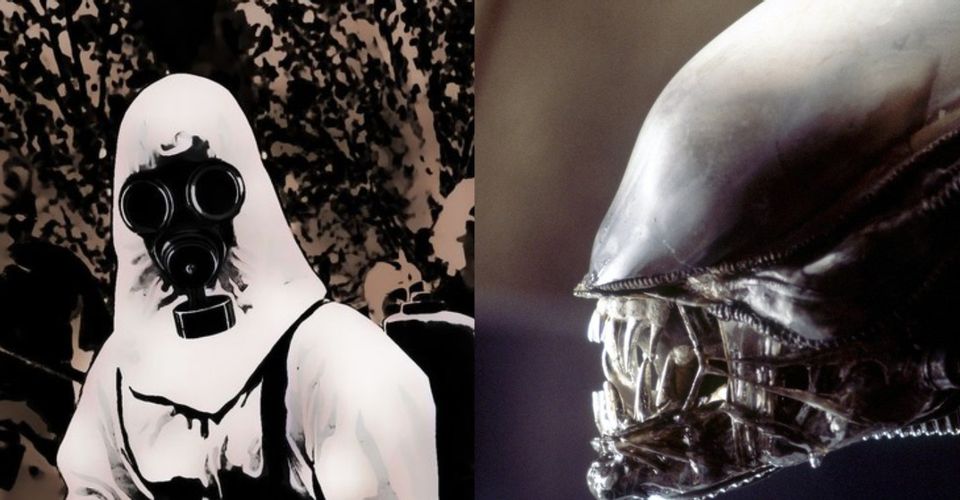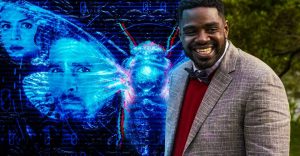10 Best Sci-Fi Horror Films Of The 1970s

The 1970s were a monumental era for films that effectively blended sci-fi and horror. A high point was definitely the release of Ridley Scott’s space horror Alien but other than the 1979 classic, the decade also saw the rise of future cult classics like Invasion of the Body Snatchers and The Stepford Wives.
Many were also creature features such as Empire of the Ants and numerous Godzilla films. While most of them might not have aged well, body horror arguably peaked around this time. Apart from the aforementioned Alien and Body Snatchers, the 1970s marked the rise of David Cronenberg who directed quintessential body horror films like Rabid and Shivers.
10 Alien (1979)

Even though space horror and extraterrestrial horror have found commercial popularity today, Alien continues to be iconic for its stylistic production design, Sigourney Weaver’s protagonist Ripley, and of course, the chilling presence of the titular Alien aka the Xenomorph.
The film centers upon the crew of the Nostromo spaceship dealing with a parasitic invasion. While aliens had been experimented with in previous films, Ridley Scott’s second film favored a more atmospheric approach to the threat from outer space. The emphasis on tension over melodrama definitely makes Alien worthy of consistent praise in the decades to follow.
9 Rabid (1977)

Directed by sci-fi horror legend David Cronenberg, Rabid stars Marilyn Chambers as a woman who gets infected with a grotesque entity that thrives on her underarm. And within no time, the rabid outgrowth starts feeding on other’s blood and the infection spreads all over the Quebec countryside.
Rabid is definitely a classic, largely owing to its special effects and Cronenberg’s absurdly terrifying direction that would further be developed in the 80s with The Fly and Videodrome. In the times of the global pandemic, such ‘viral outbreak’ films would only acquire new definitions and interpretations.
8 The Crazies (1973)

Following his successful debut Night of the Living Dead, George A Romero directed The Crazies in the same year as Season of the Witch. While the latter is largely forgotten, The Crazies has had a resurgence as a cult film. It might not be Romero’s finest work but its social undertones are enough to make it a thoughtful sci-fi horror.
The film highlights the risks that bio-weapons pose for civilians as an army plane containing such bio-hazards crashes near a Pennsylvania borough. This event infects the water turning the citizens into raging homicidal creatures referred to as ‘the Crazies’.
7 Phantasm (1979)

Don Coscarelli wrote, directed, shot, and edited this science fantasy horror classic that kicked off a franchise of otherwise unmemorable films. The first Phantasm stars Angus Scrimm as a creature known as the Tall Man whose only purpose is to turn Earthlings into dwarves and use them as slaves on his own planet.
As compared to the other films on this list, Phantasm might not be the most well-made but one can definitely find Coscarelli’s vision to be heartfelt. Financed by his father, doctors, and lawyers and with special effects designed by his mother, Phantasm is definitely one of the best independent horror films from the last century.
6 The Stepford Wives (1975)

As Joanna Eberhart (Katherine Ross) explores her new life at Stepford, she realizes extreme subservience on part of all the women around her. As she digs deeper, she encounters a larger conspiracy at hand involving ‘fembots’.
For its time, The Stepford Wives was revolutionary in its exploration of gender roles that govern society. While its underlying feminism can be up for debate today, this adaptation of Ida Levin’s novel of the same name makes for an engaging study in satirical horror. The dystopia in the Connecticut community of Stepford isn’t depicted as a straightforward invasion. Rather, this dystopia is one that’s hidden in plain sight, one that aims to subtly take over women.
5 The Brood (1979)

The Brood yet again captures David Cronenberg’s fascination with visual, grotesque horror. But at the same time, the film has its heavy moments and bears several interpretations on the concepts of parenthood and mental illness. The narrative mainly revolves around a series of visceral murders, a pattern that’s somehow linked to a mentally ill woman.
Not only does she have to face the pressure of an ongoing custody battle with her husband but she also faces the onslaught of unconventional therapy techniques by a controversial psychologist. The film has its fair share of human drama coupled with disturbing imagery while Samantha Eggar takes the spotlight playing the lead character.
4 Dr. Jekyll And Sister Hyde (1971)

The concept of scientifically-induced ‘double personality’ was introduced by RL Stevenson in his sci-fi novella Dr. Jekyll and Mr. Hyde. Since then, the book has inspired several derivative horror films but Dr. Jekyll and Sister Hyde succeeds at painting a more imaginative picture.
As the title suggests, the film’s Dr. Jekyll takes an evil, female form after an experiment gone wrong. Even though Hyde is the personification of evil, the film succeeds at unleashing Jekyll’s horror too as he starts murdering women for a regular supply of female hormones for his serum. And then to increase the tension, the Jack the Ripper murders are thrown in the mix.
3 Invasion Of The Body Snatchers (1978)

Horror remakes can be risky ventures but one of the successful examples includes the remake of the 1956 sci-fi horror, Invasion of the Body Snatchers. Somehow, the remake superseded its predecessor not only in terms of more advanced visual effects but also with a more believable sense of real-time horror.
For the heroic health inspector (Donald Sutherland) and his peers, it’s a race against time to figure out the origin of the parasitic ‘Body Snatchers’ who are involved in creating emotionless duplicates of human beings. This ultimately culminates into the third act that still stands the test of time as one of the most iconic final scenes in cinema.
2 The Incredible Melting Man (1977)

An astronaut gets infected during a space operation at Saturn. Back home on Earth, the radiation continues melting skin turning him into a flesh-eating murderer. More than its premise, The Incredible Melting Man should be noted for its path-breaking makeup and special effects.
Makeup effects artist Rick Baker deserves special mention for artificially recreating the disintegration of the titular character’s skin that makes for a fairly realistic and gut-wrenching sight. Such effects would later be found in memorable scenes from 80s films like Raiders of the Lost Ark and Robocop.
1 Shivers (1975)

Out of the many forgettable and formulaic body horror films of the decade, Shivers stands out along with Rabid and The Brood. In this case, the plague is initiated by genetically engineered parasites that can turn humans into sex-addicted freaks.
Despite the seemingly outrageous plotline, Shivers distinguishes itself over similar exploitation films by focusing more on the fear of the unknown rather than cheap thrills and shock value. It’s definitely of historical importance for avid fans of modern body horror films like James Gunn’s Slither.
About The Author


















